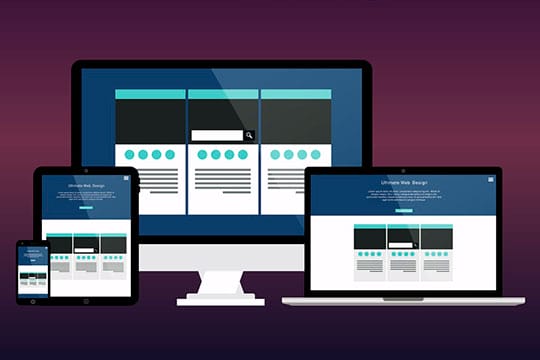In this article, we will address the leading causes of poor eCommerce user experience that leads to high bounce rates, low conversion rates, and the poor influx of traffic. If you recognize one of these issues in your own online store, you should consider a thorough website redesign.
Did you know that only 3% of eCommerce website visits convert into a product purchase? More often than not, the reason for poor customer acquisition and retention is in the website design. Online stores come with their own set of challenges and web design-related issues that can potentially damage your business performance and even affect your reputation.
The current scenario is such that everybody is adhering to their handheld gadgets, using Internet services. At the current stage, nearly 75% of the global population are using the Internet on a daily basis. And, in such a stage, you require maintaining your online business profile. But with the passage of time and the evolution of technology, your website is a too demanding overhaul. Either you are running a small business or an owner of a renowned brand; it’s the need of the hour. But how will you know that your website is in need of a redesign?
Following are the symptoms indicating the requirement of an eCommerce website redesign.
1. Your website pages load slowly

40% of visitors will leave a desktop website that takes more than three seconds to load and 53% of them will leave a slow mobile website after the same amount of time. Also, fast-loading websites have 70% longer session times and 35% lower bounce rates.
Page loading speeds play a vital role in retaining today’s customers whose attention span and patience continue to shrink. Page loading speeds are also an SEO signal that Google picks up on and ranks your eCommerce website accordingly. Faster websites get a higher rank, while slower ones get some penalties with a lower rank.
How fast your website pages will load depends on a wide array of factors, from image sizes to untidy code. A slow-loading website negatively impacts your traffic, impressions, conversion rates, visibility, and ultimately, your revenue. By redesigning and optimizing your eStore for faster loading, you position your online store for better usability and search engine performance.
Recommended for you: Are You Building a Shopify Health & Fitness eCommerce Store? Try These Themes First!
2. Your website has poor usability

A website that uses outdated architecture or obsolete technology is poorly responsive, has badly implemented plugins, feels too heavy, and has poor readability. Moreover, bad usability is also reflected in an excess of needless elements, lack of structure and order, little to no space between blocks of content, bad color coordination, and inconsistent typography.
Evaluate your eStore for the quality of usability. If you find any of the above, or that your website:
- Has a complicated checkout process,
- Has no search feature,
- Or, has too many navigation options,
then it may be time to give your online store a thorough workover in order to improve the usability of your website.
3. Your eStore isn’t mobile-friendly

Well over 50% of all internet traffic is happening on mobile devices today. eCommerce is no exception, as smartphone and tablet users will contribute to 54% of all online sales in 2021.
With the evolution of the ‘Mobilegeddon’ Google update, it has been made compulsory to make the website mobile friendly for better user engagement, leads, user-experience. While searching for a mobile device, Google used to show the “Mobile-Friendly” caption ahead of each result. It demonstrates that your website is mobile-friendly and will be visible in device format. If you have still not made your eStore responsive, it’s your website is demanding a complete overhaul and redesign.
In this age, it is imperative that your eCommerce website is fully optimized for mobile devices. This means, first and foremost, that it exhibits all the traits of a responsive web design and displays equally well on devices of all sizes.
A mobile-friendly online store provides the best user experience to smartphone and tablet users thanks to more natural and intuitive navigation, while your site’s overall functionality and branding stay intact.
4. Your website’s SEO is performing poorly

A website’s reputation can only be calculated with the visitors on either a weekly basis or a monthly basis. Google Analytics is the best tool to search traffic over any website. You can check the monthly, weekly, yearly traffic and analyze the change during that period. If you spot a steep declination day by day, you should get an alert for a complete renovation of your website.
When people are looking for a product to buy, they turn to Google search first. In fact, Google search is where over 90% of all online experiences start.
Search engine optimization (SEO) is the cornerstone of any website creation and digital marketing. Without it, your eCommerce business doesn’t stand a chance of reaching highly qualified prospects who are interested in what you have to offer.
The main reason why your eCommerce website needs to be optimized for certain keywords is so it ranks high in search results. 95% of Google search users never go past the first page of results!
In other words, if your store doesn’t rank on the first page for certain products at least, it’s as if it doesn’t exist.
It’s obvious that best results can be obtained via organic traffic; which comes from ranking relevant pages for relevant keywords. But with the passage of time, no one heads on the page and left it untouched. This leads to an overall degradation of the rankings. After checking on Google or other search engines, you observe that your pages are not ranking for relevant keywords; you require redesigning your website with a better CTR (Click through Rate), a better conversion rate.
SEO best practices
SEO best practices have changed significantly in recent years. Tactics like keyword stuffing and black hat SEO don’t work anymore and may, in fact, hurt your website more than you know because Google penalizes this kind of activity.
As any upstanding SEO agency would suggest, an outdated website design almost always equals poor SEO best practices that cost you visibility and traffic.
A contemporary set of SEO best practices includes on-page and off-page SEO, optimizing image names and alt tags, frontloading keywords in copy, meta tags and titles, short URLs, content aligned with search intent, and so on.
A website redesign that follows these practices results in much greater SEO success.
5. You are experiencing high bounce rates and low conversion rates

Having a steady influx of website visitors is one thing, but keeping and engaging them is another. That’s why so many website owners whose visitors land on their pages and then leave after a few seconds wondering what they’re doing wrong.
This usually happens for two reasons:
- The visitors didn’t find immediately what they were looking for and what was promised to them in the headline or meta description in search results.
- Your website’s navigation, layout, or content is generally confusing to visitors who then feel overwhelmed and want to leave.
Failing to provide what the customers want is the number one cause of high bounce rates which inevitably lead to lower conversion rates. Sometimes, it might be hard to understand what your customers want, so having all of the additional information, like customer experience analytics can give you some points on what should be improved on your website. Visitors who do not find what they were looking for in a matter of seconds will leave the website. These are relevant signals that your eCommerce website is in dire need of a redesign.
By implementing a website layout that meets your visitors’ expectations and needs, aligns its content with their intent, and provides a good user experience, you are on your way to improving your bounce rates significantly.
6. Your website is difficult to navigate

For seasoned shoppers as well as first-time visitors, difficult navigation is a great source of frustration that will result in cart abandonment and general dissipation of leads.
It makes it harder for shoppers to find what they are looking for and doesn’t provide them with the sort of user experience they may be accustomed to on other online shops.
When designing or redesigning an eCommerce website, it is paramount to conduct thorough A/B tests of several types of navigation. This should include your main menu, on-site search, CTAs, breadcrumbs, and other helpful elements.
A famous retailer, H&M, left out the search bar from one of its website redesigns, leading to a huge loss of visitors and revenue before they rectified the problem.
An eCommerce shop with concise, multi-tiered navigation organized into categories, breadcrumbs for better orientation, and a search engine that automatically generates results will provide the best user experience for visitors who may otherwise feel overwhelmed by the lack of structure.
You may like: A Basic Guide from Setting Up M-Commerce to Generating Profits.
7. Your website includes a generic product description

The product page is a crucial spot where eStore visitors make their purchase decision based on the information they find. Inaccurate, generic, incomplete, and confusing product descriptions will lessen the odds of conversion. Product description optimization should be an obligatory step when you decide to give your online store an overhaul.
To complete this step with success, you need to avoid complex and lengthy descriptions, but still, find a way to squeeze in all of the absolutely essential product info that educates customers about the products.
Make sure there are no spelling and grammar mistakes because these can kill the trust your audience has in you. Use product keywords throughout the page – in the product description copy, product title, title tags, etc. for better SEO performance.
And above all, give each product page a unique treatment by tweaking the content in order to make it different, even for every variety of the product. Generic product descriptions and those with repeat copy come across as lazy and less informative.
8. Your checkout process is overly complex

One of the leading causes of high cart abandonment rates is needlessly complex and complicated checkout processes. This outcome is what infuriates most retailers when their customers decide to abandon the purchase at the moment where they’ve already placed their item in the cart and proceeded to complete the buy.
During their checkout process, users want a smooth, distraction-free, and above all, simple experience that consists of two steps at most. Another mistake retailers make is insisting on user registration at this point.
When redesigning your eCommerce website, don’t make user registration a requirement – instead, allow customers to complete the purchase as a guest. This user freedom may boost your revenue rates generously.
An essential part of your online store redesign should be a checkout process that strips the contents of a checkout page to the bare minimum: just the essential form details that users need to submit.
You may even want to remove other website elements, like side modules, banners, and navigation, so as not to distract the users.
9. Your website has payment security issues

For a majority of eCommerce consumers, the security and integrity of their sensitive data is the number one concern.
Your shoppers’ user experience depends on the convenience, safety, and speed of payment transactions. If you do not have properly displayed signals that will let your visitors know that your eStore is secure and their data is safe, they may choose not to do business with you.
A web design that follows up-to-date safety practices and protocols will keep viruses and malware away. When redesigning a website, make user security one of your priorities.
Acquiring an SSL certificate for all the payment options and making them 3D secure is usually the first step in establishing these safeguards. Also, be sure to provide your shoppers with different payment options, such as cash on delivery, eWallets, credit cards, and more.
10. You have an out-dated web design

The design is what catches a visitor to stay on your website as well as make a lead. Today’s era revolves around flat design. If you are still running the old fashioned template for your brand popularity, then you are just trying to find water on mercury (almost impossible). Redesign to transform your website from the old style to a complete ‘flat design’ based outlook. This will not only provide a better persona to your business profile but also, help in generating genuine leads.
During earlier days, the flash was highly demanded and was even used while developing an eCommerce website. The reason was less utilization of code and a better design. But now, you can no longer use the bulk of Flash within your website. It will affect your website reputation; Google as well as other search engines will find it difficult to crawl the site pages.
11. Your monthly leads is declining

Being a business-oriented website, you may also require enhancing your monthly leads. But you are not getting the ROI (Return on Investment) as you are expecting from your website. In this case, you need to renovate your site and make it up-to-date. This will help you compete with your rivals in your respective field and incline your monthly leads too.
12. Absence of blog in your website

Since last year, the content has been remarked as the King in populating a business. On such a path, if your website is not supplied with a blog, you will face a strong issue. You need to update your users with what’s latest in the market or on your website. That can only be done by adding a Blog section on your site. But please remember, you need to update your blog on a regular basis.
You may also like: 10 Tips to Boost Holiday eCommerce Sales Like A Pro.
Final Words

Check which of the above-stated points are present on your website and consult the appropriate remedy to it. You can hire an expert team to fulfill your requirements and bestow an alluring redesign makeover to your eCommerce website.
An eCommerce user experience can retain or turn away a large number of prospective buyers. Websites with online stores need a greater degree of careful design and optimization.
Is your eCommerce site exhibits any of the roadblocks we have covered in this article? Addressing them appropriately will set your business on a path of sustainability and prosperity.
This article is written by Ravinder Tanwar. Ravinder is the digital marketing specialist at AdroitBridge. The ardor to learn something new is what makes him agile in the field of SEO. The mastery over Digital Marketing is supplemented with the knowledge of Content Writing, which enhances the power of overall strategy. Apart from this, he is an expert in Photoshop and other web designing tools. Follow him: Facebook | Twitter.





